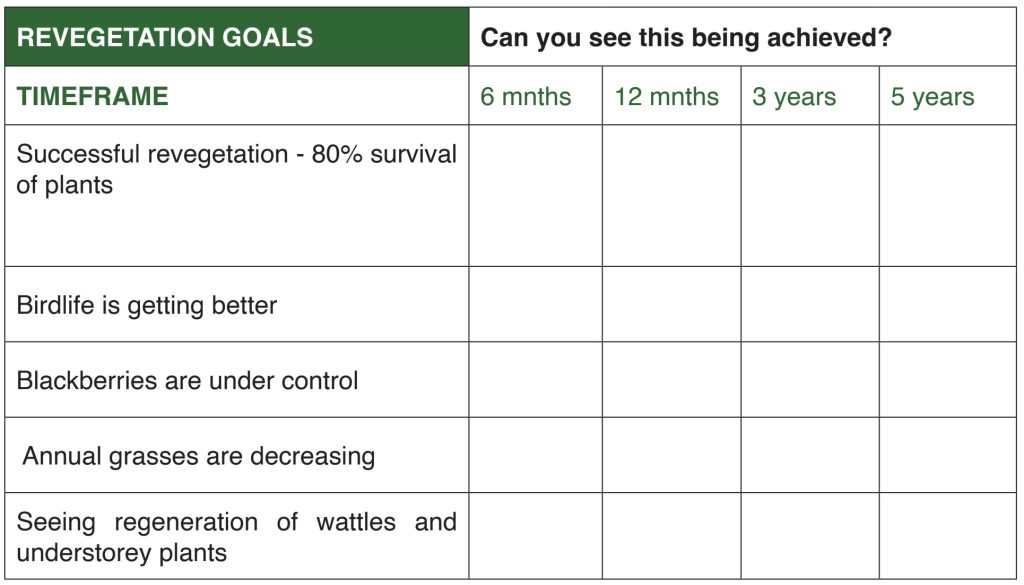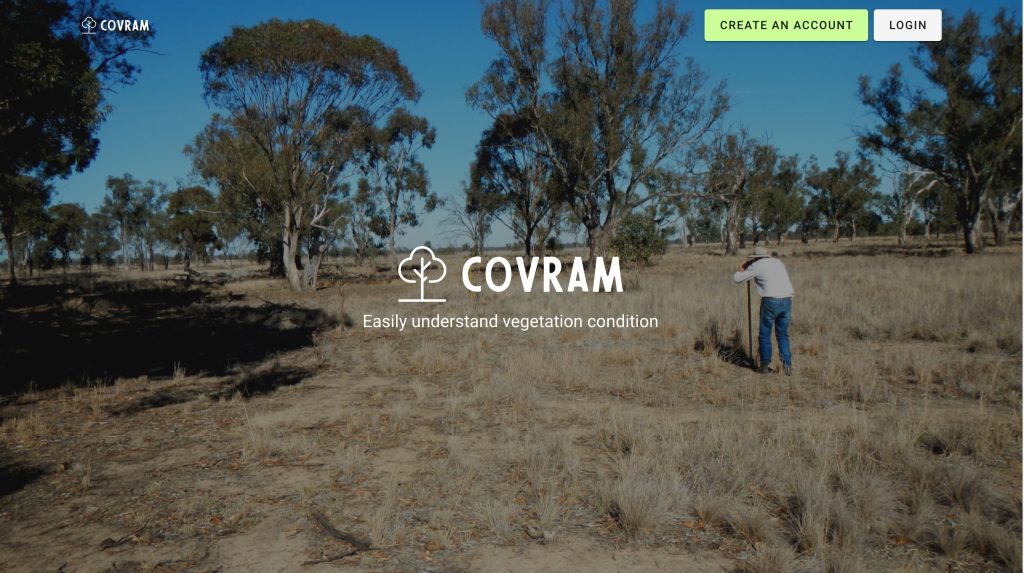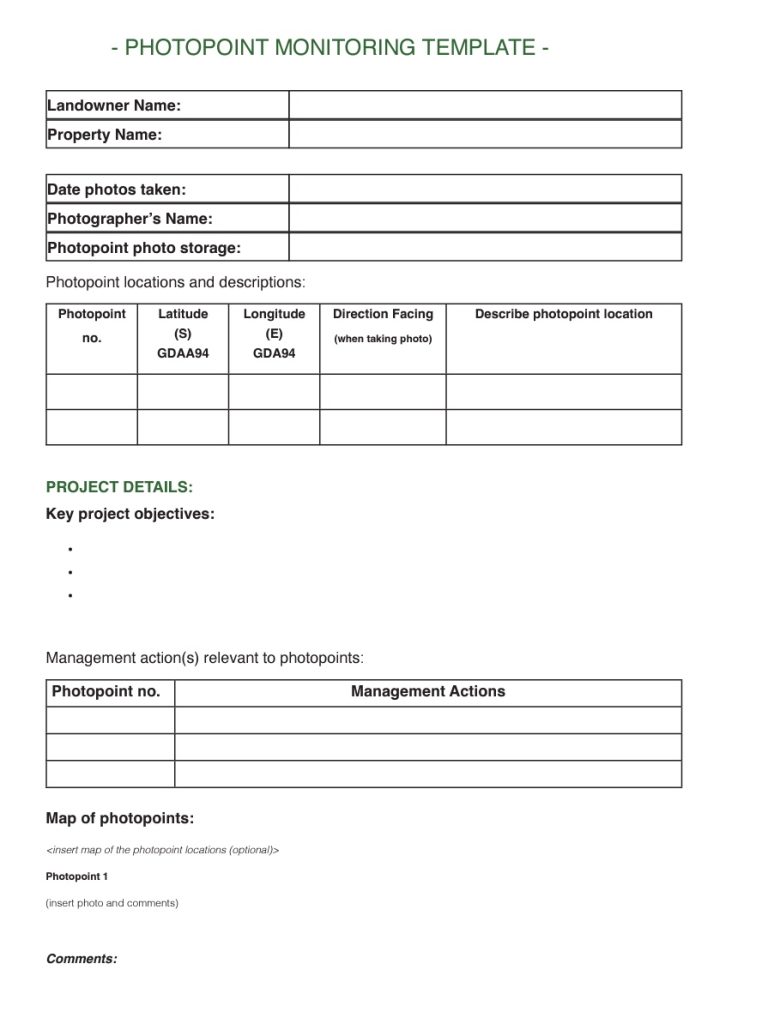Monitoring Your Site
As a landholder you should revisit the site often. You will pick up on any problems early and improve the outcome in the longer term and enjoy the progress.
Consider these issues:
- Has revegetation on site been successful? The success or failure of a site depends on the outcome you were trying to achieve in the first place – for forestry and carbon sites you may need to maintain a certain number of stems per ha, but for general biodiversity plantings you can expect that survival in the range of 70–90 per cent to be successful. Ultimately you have to make a judgement about whether the site achieves the outcomes you set out to achieve – in some cases 50 per cent survival might still be called a success.
- Do revegetated areas of the site have a mix of species actively growing?
- Do plants appear healthy and undamaged? Is there any evidence of pest species?
- Does there appear to be any natural regeneration of native species occurring?
- Is the fencing in good condition?
- Are there woody weeds that need controlling?
Formal Monitoring
Sites that have been funded or supported may have specific monitoring requirements as part of the contract and have to be done at certain intervals and according to a specific methodology.
If you want to implement site monitoring yourself, there are many resources available and we encourage you to do some research online to find tools that can help you.
To set your monitoring goals, think about (and write down) the things that you want to see happen on the site and check in at six months, twelve months, three years, five years.
The key reasons for monitoring are:
- to see any problems before they become severe (e.g., weed incursion, pest incursion)
- to allow for adaptive management – if a patch has failed you can correct it, if something is working you can encourage it
- to see if you are meeting your goals.
Here’s an example of a simple monitoring plan that can trigger you to action:

Monitoring plan example.
Find out more…
Vegnotes (link to come)
Greening Australia (link to come)
David Goldney’s bushland assessment sheet from save the bush toolkit (link to come)
Photo Point Monitoring
What is Photo Point Monitoring?
Photo-point monitoring is a simple, effective tool to visually monitor change over time. Typically, photo points are fixed (i.e., photos are taken from precisely the same place, looking in the same direction) and are used to demonstrate change at a site. Photo points help monitor the response to management changes at a site, such as grazing exclusion, tree planting, or wetland watering. Photo points are especially effective in monitoring changes in native vegetation cover and structure over time.
Some Tips for Photo Points
- Locate where you expect to see some change – this may be where you are undertaking weed control, revegetation, ecological burning, or excluding grazing for a while.
- Include a distinctive feature, such as a corner post or large tree, that will enable you to find the location and orientate the photo again in the future.
- Make it easy to access and find again or mark it – (e.g., near the access track or gate into the site or alternatively put in a star post with a cap or flagging tape).
- Take photos looking south to avoid sun glare.
- Take photos in landscape orientation.
- Try and take photos between 9am and 3pm to reduce shadowing.
- Try to minimise the amount of sky in the photo.
- Photos repeated annually should be taken at the same time in the season.
- Include a whiteboard in the photo with date and site name details.
- Take a copy of the previous photographs with you to ensure the new photograph will be framed similarly.
Recording Photo Point Information
It is essential to collect the following information with each photo point, as it will help to reference each site and provide context for the monitoring:
- date, time and weather conditions
- photo-point location
- the direction of the photo (e.g., looking north, south)
- GPS coordinates, if possible
- reason for taking a photograph (i.e., what is the expected change).
Photo point monitoring using a board to identify the date and site details can be a useful way of making sure the photos are identifiable in the future. Photo: L. Bull

How Often Should Photographs be Taken?
How often photographs are taken depends on the change you are trying to show, but generally:
- if you want to show before and after weed removal or planting, take photos over a short timeframe
- if you want to show changes in growth of direct seeding or planting or modifications to a site after removing stock, take photos every twelve months to three years.
Storing Photo Points
Store photos in an album or file. When naming the album or file, include the property name and site name or number, and for each image, have the site name or number and date.



